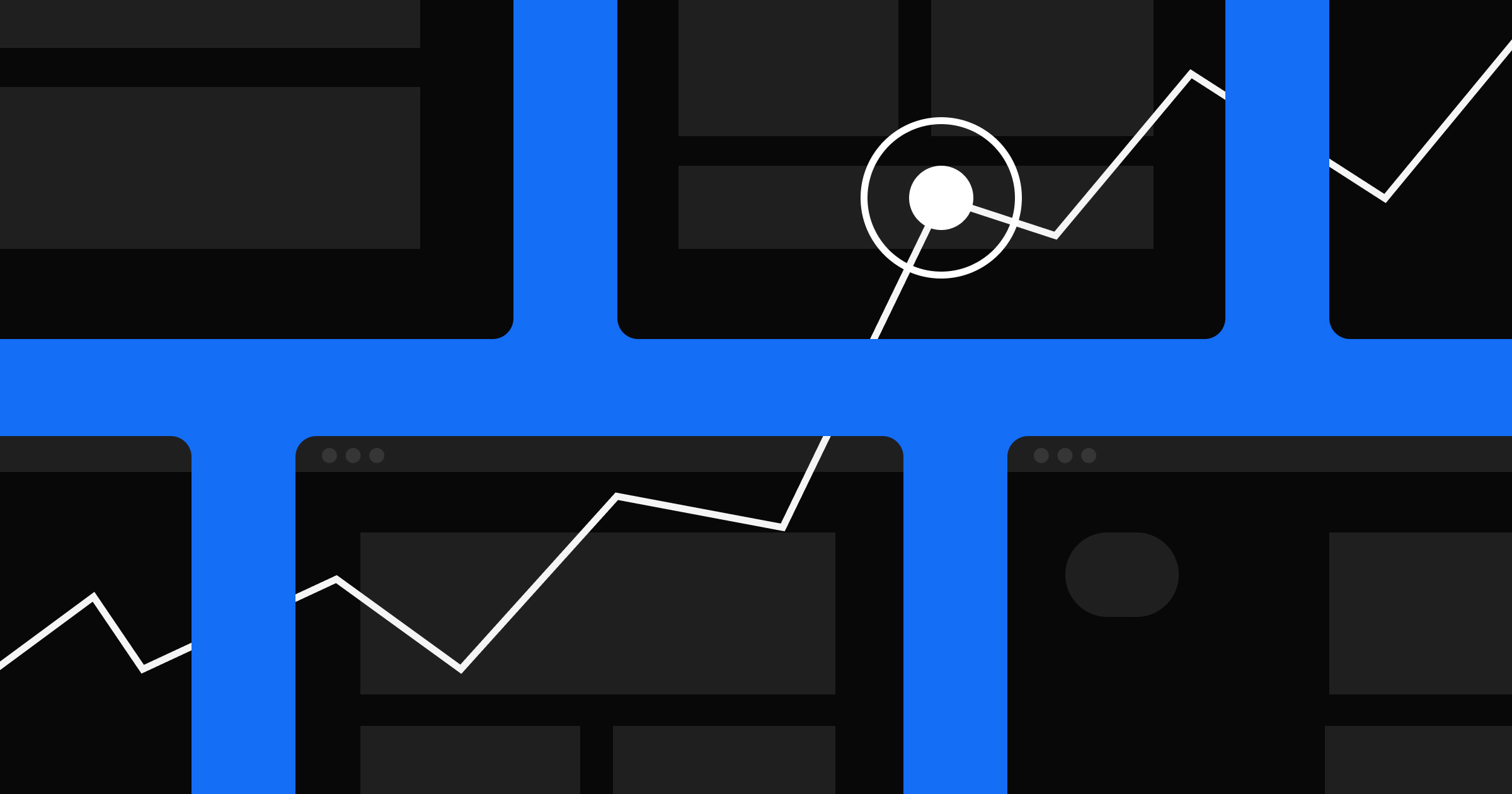AI is reshaping the future of the web. Webflow intends to lead the charge.
We are seeing in real time artificial intelligence (AI) transforming the enterprise. AI-first and AI-powered solutions are becoming the norm and AI assistance, automation, and augmentation will become expected capabilities of design tools and website platforms.
This is only the first AI wave of what will be a wave set, so we are still in the early stages of transformation. Despite being in its infancy, generative AI is already transforming the role of the website. Webflow intends to lead that charge.
Generative AI is changing the buying journey for your customers
The customer journey is evolving in ways that make it harder and more expensive to drive people to your website. Increasingly, your customer's first touchpoint with your brand may be an AI summary on Google or a response in ChatGPT. And as search engine AI summaries are getting rolled out to all visitors across the world, organic search results are increasingly falling down or off the first page.
Organic search traffic is being hit hard by AI search results and experts believe that trend to continue in significant ways. As a result, you need to convert at a higher rate than ever before to make every visit count.
When visitors find your site, it’s critical to make a good first impression and engage each individual with the right message. That means creating content and an overall experience that sparks interest and speaks clearly to their pain points.
AI is changing the way you design and build your website
AI is revolutionizing the very foundation of web design and web development. Whether it’s generating a line of copy or an entire landing page, AI is helping individuals and teams build, launch, and iterate on websites quicker than ever.
Large Language Models (LLMs) are particularly adept at eliminating what is known as the "blank page" problem. These models take the rote, often tedious, tasks out of website development, freeing you up to focus on creative or strategic work. With AI, you have an ever-present design and content marketing assistant to ideate, brainstorm, and bounce ideas off of.
That said, while AI-native tools can enhance productivity, the potential downside is that over-reliance on generative AI could lead to a homogenization of design outputs, reducing the uniqueness and creativity that makes each website stand out.
At Webflow, we don’t see AI as just a disruptor, but as a partner that can help accelerate how you design, build, and launch websites. We are committed to amplifying the impact of your creativity while harnessing the power of AI.
How Webflow thinks about the future of the web in the age of AI
We’ve integrated AI into Webflow based on three core principles that help you create smarter, work faster, and unleash your creativity. This approach is based on how we believe AI will redefine the process of launching websites now and in the future.
- AI will continue to expand Webflow’s mission: Webflow’s mission is to bring development superpowers to everyone, and AI is our newest way to harness these powers. AI accelerates the creative process, allowing visual developers to focus on creating dynamic website experiences. We’re already seeing it automate simple design tasks like style application and content ideation, and we believe the potential is limitless.
- AI is a steel thread, embedded across our product: Webflow is focused on driving long-term value by integrating AI across our product experience to make it easier than ever for our customers to build increasingly impactful experiences. It is far too common to see design and web development tools build AI capabilities as standalone features that don’t deliver on the core experience users expect when using AI. We envision AI to be your companion along every step of the website lifecycle journey, not as a one-off tool. As language, image, and vision models advance, we will continue to seamlessly integrate new AI skills across our platform.
- Protecting data and privacy by default: We believe that your data is yours, and yours alone, which is why we are proud to say that we do not use your data to power any of our generative models today. And in the future, if this were to change, we would always be upfront and explicit about it, and give you the power to first opt in to use the tools, rather than opt out.
With these core principles driving Webflow’s thinking about AI, let’s take a look at how these principles show up across our platform.
AI across Webflow: The Website Experience Platform
AI will power and improve every aspect of our Website Experience Platform (WXP), whether it is helping to generate a new section for your site, editing a line of copy in your CMS, or powering personalized content and optimizations.
Our Webflow AI Assistant offers in-context help and ideas so you can build faster and better than ever. Our AI Assistant has multiple skills available throughout Webflow.

Build: Generate styled sections quickly with Webflow’s AI Assistant
One of the AI Assistant’s skills is to help you design and generate new styled sections quickly.
The Assistant learns from your design systems and site context to generate new sections of a website from conversational prompts. Lean on it to quickly ideate on and build common site sections such as pricing, features, testimonials, and more. Once the Assistant generates a preview of your section, you can further customize it to apply the finishing touches to fit your site.
For example, you can easily adjust an element’s background or color to match your brand. With AI Assistant, you can bring new campaigns to market faster, giving anyone on your team the ability to accurately leverage your site's structure and design systems.
Manage: Generate and edit copy directly inside Webflow
In addition to its design capabilities, the AI Assistant can also help marketers create relevant content quickly, inside Webflow. Because it uses the context of your content from the fields you’ve built and recent items in your CMS collection, the Assistant can generate relevant sample data or full CMS content so even your first draft already nails your brand’s tone of voice.
This is perfect for content marketers quickly spinning up an article or designers jumpstarting a page with realistic content. We’re excited about how the Assistant will accelerate first-pass content and free up your time for more strategic work.
Optimize: Introducing Webflow Optimize
Finally, AI Optimize is part of Webflow’s native A/B testing and personalization solution that lets you run parallel, multivariate tests powered by AI. Because it learns from your visitors in real time, AI Optimize will automatically and dynamically personalize the experience for each unique visitor that comes to your site to help maximize engagement, and ultimately conversions.
AI can improve conversion rates and optimize user experiences in real-time, making campaigns more effective and efficient than ever before.
Building the future of web, together
These new features are built on top of existing AI offerings available to you in Webflow, including our Localization solution as well as powerful third-party apps to extend the power of your site like Adobe Express, Jasper, Relume, and more. You can learn more about all the ways you can already leverage AI in Webflow here — and the team is already working on more we can’t share quite yet.
We truly believe this is only the first wave of AI with many more to come. We can’t wait to unlock more ways to transform your website experience for both your team and your customers. I am so proud of the Webflow team, and I am so grateful for this community. We are building and designing the future of the web, together. And, we’re just getting started!


















































